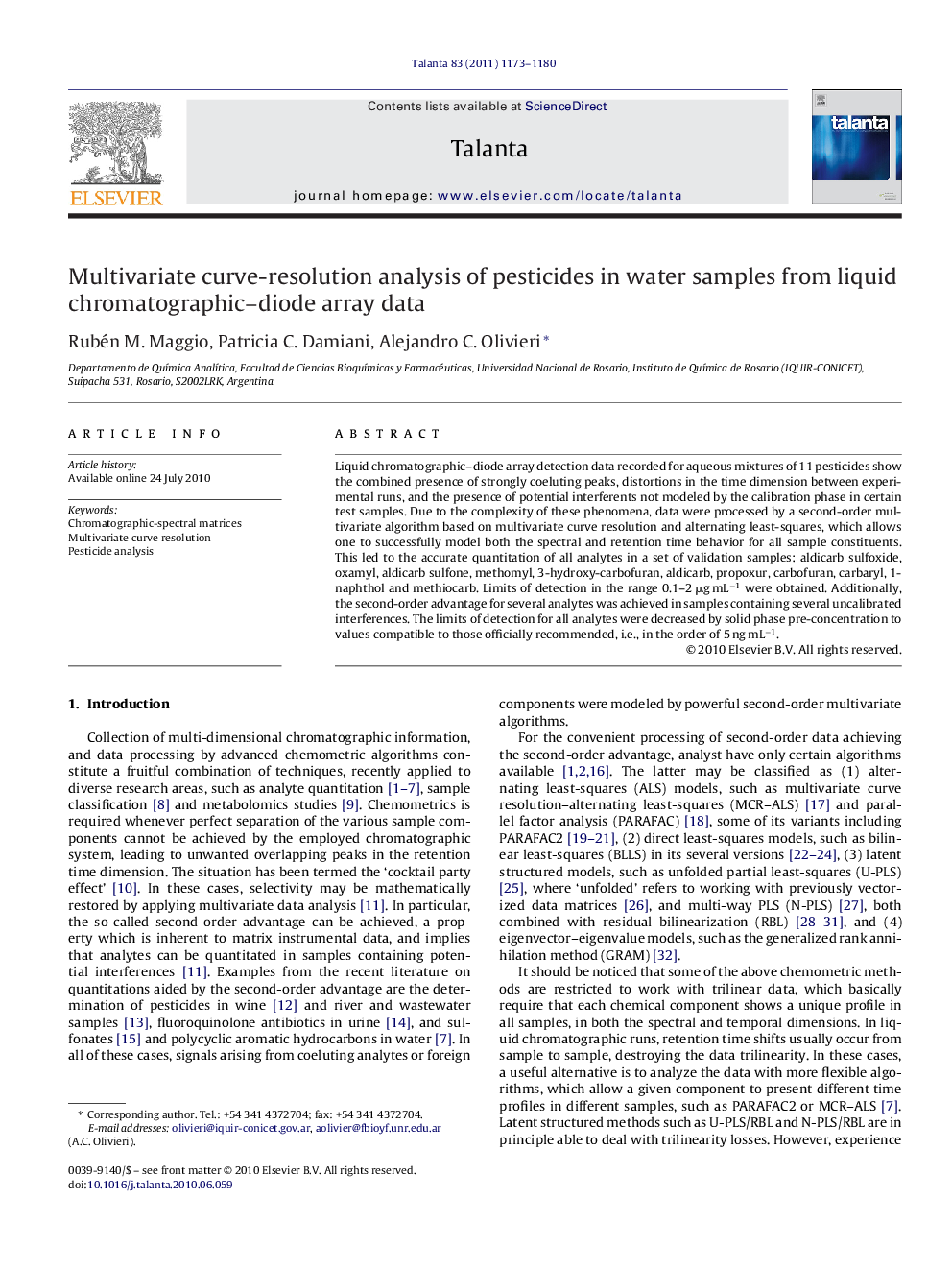| Article ID | Journal | Published Year | Pages | File Type |
|---|---|---|---|---|
| 10560681 | Talanta | 2011 | 8 Pages |
Abstract
Liquid chromatographic-diode array detection data recorded for aqueous mixtures of 11 pesticides show the combined presence of strongly coeluting peaks, distortions in the time dimension between experimental runs, and the presence of potential interferents not modeled by the calibration phase in certain test samples. Due to the complexity of these phenomena, data were processed by a second-order multivariate algorithm based on multivariate curve resolution and alternating least-squares, which allows one to successfully model both the spectral and retention time behavior for all sample constituents. This led to the accurate quantitation of all analytes in a set of validation samples: aldicarb sulfoxide, oxamyl, aldicarb sulfone, methomyl, 3-hydroxy-carbofuran, aldicarb, propoxur, carbofuran, carbaryl, 1-naphthol and methiocarb. Limits of detection in the range 0.1-2 μg mLâ1 were obtained. Additionally, the second-order advantage for several analytes was achieved in samples containing several uncalibrated interferences. The limits of detection for all analytes were decreased by solid phase pre-concentration to values compatible to those officially recommended, i.e., in the order of 5 ng mLâ1.
Related Topics
Physical Sciences and Engineering
Chemistry
Analytical Chemistry
Authors
Rubén M. Maggio, Patricia C. Damiani, Alejandro C. Olivieri,
